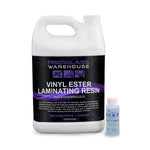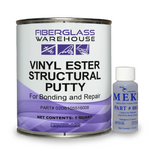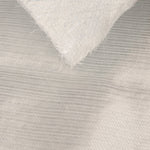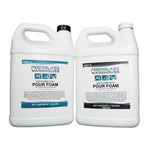You have no items in your shopping cart.
Ready to begin a fiberglass project? Make sure you learn as much as you can before getting started. In this blog post, we will discuss seven things that you need to know before starting a fiberglass project. By learning these tips, you'll be able to avoid common mistakes and have a successful project!
Resin Tips
There are two main types of resin used in fiberglass projects: polyester and epoxy. Polyester resin is the most common type of resin used. It is less expensive than epoxy and is more forgiving to work with. However, it is not as strong or waterproof as epoxy. It comes in different grades including ortho laminating, ISO and finishing resin. Ortho laminating and ISO resin will cure tacky so you can do many layers without the need to sand in between. You will want to use a finishing resin or add wax to your final layer for a tack-free finish. Epoxy resin is more expensive than polyester resin and is known for its strength and durability. It comes with three different hardener speeds: fast, medium, and slow. Epoxy will cure with a hard, tack-free surface.
Polyester resins have a very strong smell. It is critical to make sure you have a well-ventilated area to work in. A proper respirator is also important. If you can't do your project outside, do it in an open space where air circulates, preferably with a window or door open. Epoxy resin also has a slight odor but it is nowhere near as strong as polyester and vinyl ester resins.
When working with resin, you will need to work fast. Not so fast that you do not mix and measure correctly, but fast enough that the resin does not start gelling in your mixing cup. Have everything ready to make sure nothing delays the resin process.
Fiberglass Tips
There are two main types of fiberglass: fiberglass cloth and chopped strand mat (CSM). You will need a good pair of scissors to cut fiberglass cloth or tape to size, but be aware that fiberglass will dull them quickly. Fiberglass is made up of glass filaments and can be harder on scissors than normal sewing fabrics.
Chopped strand mat can be cut or torn into pieces. It is very messy to work with. It is made up of short strands of fiberglass held together by a styrene binder. Those short strands can get everywhere so be prepared..
Weather/ Ambient temperature
The ideal temperature to work with fiberglass is between 70-80 degrees Fahrenheit. If it is too cold, the resin will not cure properly. If it is too hot, the resin will cure too quickly and will be difficult to work with. Watch the weather if you are working outdoors and make sure you have several days in a row that will be in this temperature range.
If you are working in hotter temperatures, you will want to use less MEKP when working with polyester resin or use a slow hardener if you are using epoxy resin. If the temperatures are colder, the opposite is true. You will want to use a little more MEKP for polyester and a fast hardener for epoxy. Do not add more than 1 3/4% MEKP to your polyester resin and NEVER use more hardener to epoxy resin than is called for. Epoxy resin has to be mixed in exact ratios.
If you are working outdoors or in a garage, make sure your project is protected from the wind. Wind can add unwanted dust particles to your finished product.
Timing
It is important to keep track of the time when working with fiberglass. Resin has a specific curing time, so you need to make sure you allow enough time for it to set before moving on to the next step. The length of time will vary depending on the type of resin/ hardener you are using as well as the ambient temperature.
Have patience and work in small batches. If you rush and mix too large of a batch, the resin will start kicking off and maybe even start smoking in your mixing cup. This will cause a big unwanted mess and could also be dangerous.
Cleaning surface
It is important to clean the surface you will be fiberglassing. Any dirt, grease, or oil will prevent the fiberglass from properly adhering to the surface. You can use a solvent like acetone to clean the surface. Make sure you wear gloves and have proper ventilation when using these solvents.
Depending on the original surface, you may need to do some sanding first. You want the best bond possible between the fiberglass and your surface. If sanding is necessary, wipe away any of the sanding dust once you are done.
Safety
Fiberglass work can be dangerous if you do not take the proper precautions. Always wear gloves, goggles, and a respirator when working with fiberglass. The fiberglass fibers can cause skin irritation so it is important to avoid contact with your skin as much as possible. Inhaling fiberglass particles and resin fumes can also be damaging to your lungs so make sure you are in a well-ventilated area. Protect your eyes with safety glasses/goggles.
Storage
When ordering resin, it is important to know when you will start and finish your project. Resins have a shelf life, so make sure the resin is used during that time. Vinyl ester resin has a shelf life of 2-3 months. Polyester resin has a 6-month shelf life and epoxy resin can last for a very long time if properly stored.
You will need to store your fiberglass supplies in a cool, dry place. Fiberglass cloth and chopped strand mat are both susceptible to moisture so make sure they are stored in an airtight container. Polyester and epoxy resins can also be affected by moisture so it is important to keep them tightly sealed when not in use. Resin must be stored in a cool, dry place or the shelf life will decrease.
Conclusion
These are just a few things to consider before starting your fiberglass project. By doing your research you are already on the right track. Putting in the extra time to choose the right fiberglass and resin, ensuring the ambient temperature is right, allowing enough time for the project, readying the work surface properly, wearing safety equipment and storing the resin correctly will help you have a successful outcome.
If you have more questions, don't hesitate to contact us.
You can email us at sales@fiberglasswarehouse.com or call us at 1-833-669-7899.
For our Ultimate Fiberglass and Resin Guidebook, you can go here- Ultimate Fiberglass and Resin Guidebook for Beginners - Fiberglass Warehouse
comments (3)
-

-
 James Young
James YoungI didn’t know vinyl esters had a 2 month shelf life now that changed my plans
-
 Mark Murray
Mark MurrayVery helpful
Thanks










@James Young- Vinyl ester starts to lose its promotion after 2-3 months. Sometimes it is still good for 12 months, other times less. Most times, it can be re-promoted by adding in new resin at 25%.